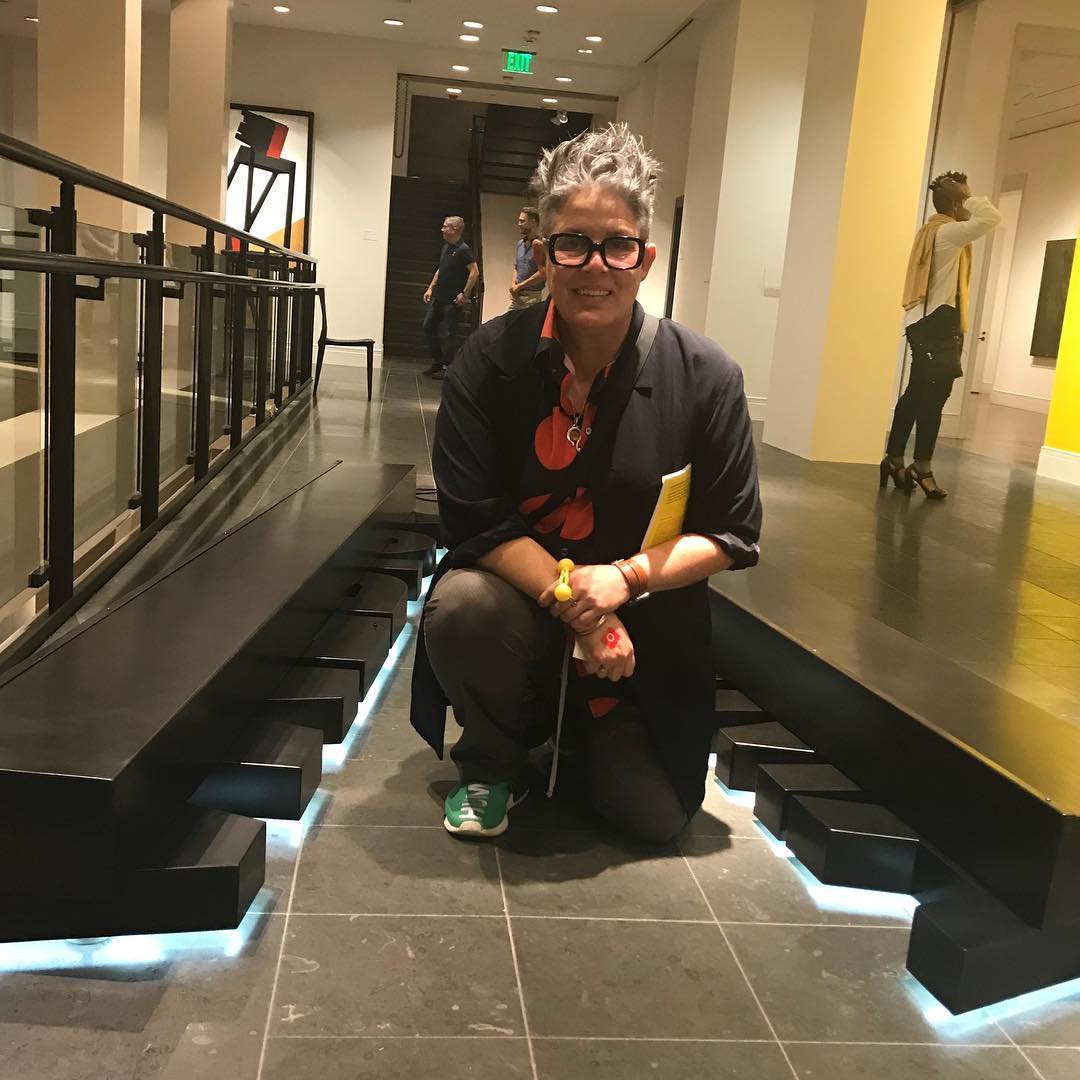Ti-Rock Moore has always been an activist, first and foremost.
Throughout her life, the French Quarter native has marched alongside activists fighting for civil rights. In the early 1990s, the artist (who is gay) advocated for her own equal rightsl but the catastrophe that struck her city just over 13 years ago made her realize that there were communities outside of her own in need of rabble-rousers.
Prior to Hurricane Katrina, Ti said she was a “typical, white liberal American,” blind to the everyday experience of minority communities.
“I really had the privilege of never having to educate myself or take the time to understand what racism was and how these racial crimes were occurring,” she said of her worldview before the city’s flood control infrastructure collapsed in 2005. “We are so connected in this city. Seeing my fellow New Orleanians abandoned and mistreated and thirsty and left behind and ignored was something that I could not wrap my head around.”
Katrina reinvigorated Ti’s activist streak, opening her eyes to the pernicious ways that racism still affects African-Americans by putting it on her doorstep.
“If the people who were left outside the Convention Center, if that had been a group of white folks, it would not have gone down the same way,” she explained.
https://www.instagram.com/p/BiE9POinflo/?hl=en&taken-by=ti_rock_moore
Ti says that Katrina left her “enraged” and she began studying. She started marching alongside civil rights activists, making impressive signs to carry as she spoke out. A friend eventually convinced Ti to turn her signage into an art piece.
“She said ‘I really think you should consider taking them up a notch and trying to get into a gallery or museum.’” Ti explained.
And that’s exactly what she did, creating her first piece of artwork a little over four years ago. It was an immediate success, and she ended up selling piecemeal into the collections of influential art collectors and the television show, “Empire.”
Since then, Ti has continued to use her work to question white supremacy and the racism inherent in the United States. She says that when she started her work, during the presidency of Barack Obama, she found that many of her fellow white liberals didn’t understand her drive to make this protest art.
“I had many of my white liberal friends say ‘Why are you doing this? Those days are gone.’ And I had to say ‘No, they are not. Wake up,’” she said. “You need to understand that the fabric of this country was woven with the threads of white supremacy.”
Ti said that she found her art reached much more people than her in-person protesting.
“The art spoke much more loudly than I could as one voice walking in marches,” she said.
https://www.instagram.com/p/BbUfOyBlPMy/?hl=en&taken-by=ti_rock_moore
Through exhibitions throughout the country and locally at Jonathan Ferrara Gallery, Ti has continued to speak out on the many injustices meted out to the country’s African-American population. While she says that white allies need to understand that their “activism comes from a learned place” and that they will “never fully understand racism because of our whiteness,” she still views it as “extremely important to educate ourselves thoroughly.”
https://www.instagram.com/p/BALoRuWLpNO/?hl=en&taken-by=ti_rock_moore
“We need to continue to interrogate our own fragility and privilege,” she said, noting that it’s crucial for the perpetrators of an unfair system to do everything they can to help dismantle it. “It’s on us to speak up, speak loud and speak often on this issue.”
And that’s exactly what Ti is doing. She has an upcoming solo show at the Houston Museum of African American built around the Martin Luther King Jr. quote, “I’ve come to believe that we’re integrating into a burning house.” Her work is also being featured in a New York pop-up museum based around the policing policy known as Broken Windows.
For more on Ti and her art, including her upcoming exhibitions, head over to her website. For more NOLA artists, check out our profiles on Emma Fick and Simon.







